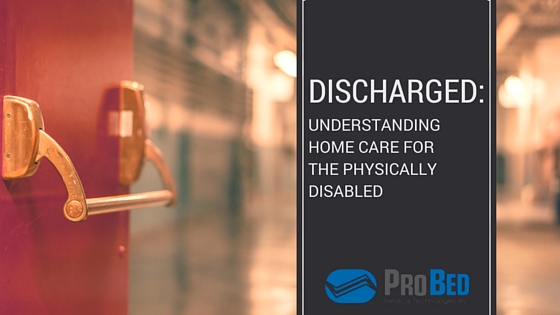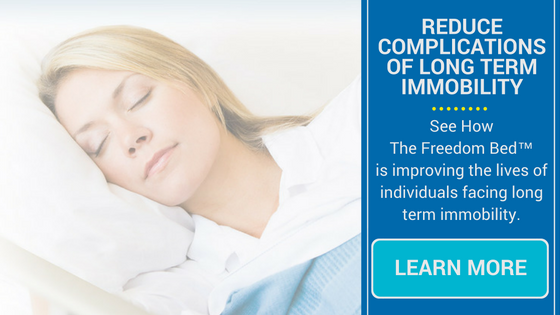
Nature designed the human body for movement and the architect of your home probably designed it for able-bodied people. Your loved one’s disability challenges both nature and the convenient layout of your home.
Disability causes a complete lack of, or significant decrease in, a person’s normal activity and movement. Immobility is a common but serious issue for people receiving care in hospitals, long-term care facilities and at home. Immobility can lead to complications that may result in serious illness, permanent disability, and even death. Fortunately, the preparations you make to your home today can help you maximize the quality of your loved one’s life tomorrow.
Assess Basic Mobility Challenges within Your Home
The changes you will need to make to your home will depend largely on the type and severity of the disability. You will need to consider whether your loved one can climb stairs, for example. Move them to a first floor room with close access to a large bathroom as necessary.
The adult wheelchair requires 60 inches of space to make a 360-degree turn, so you will need to clear out turnaround space in strategic areas throughout your house. A wheelchair requires at least 36-inch hallway clearance and 32 inches for doorways. The doorway threshold should be no higher than one-quarter inch.
The Kitchen
Food is relatively straightforward. Follow the express orders of your loved one’s doctor when it comes to food, but always provide your loved one with plenty of their favorite foods. Ask the doctor or registered dietician for help with meal strategies.
Consider counter height. The seat of most wheelchairs is only about 20-inches from the floor, which makes it difficult for someone in a wheelchair to reach a standard kitchen counter. By industry standards, the typical countertop is 36 inches off the floor. Eye level for a person in a wheelchair is 43 to 51 inches, according to the ADA, which means that your loved ones may not be able to use a standard kitchen counter comfortably while seated in a wheelchair.
Consider lowering cupboards. Cupboards are usually 18 inches above the countertop, which makes them well out of the reach of someone in a wheelchair.
Assets
After sustaining a disability, your loved one may find she has assets she can no longer use. These assets, such as cars, homes and property, businesses and even large collections can be difficult to manage and expensive to maintain. This is especially true as you take on the fulltime job of caring for your loved one.
Assets can also prevent your loved one from participating in some government programs. The Social Security Administration operates two disability programs: Social Security Disability Insurance (SSDI) program and the Supplemental Security Income (SSI) program. Your family member may receive SSDI if thhe cannot work because their doctors expect the medical condition to last at least one year or result in death. Whether or not your loved one can get Supplemental Security Income depends on income and resources, which can include real estate, bank accounts, cash, stocks, and bonds.
You may be able to convert some of these assets into tools you can use to improve your family member’s mobility. Trade an unused motorcycle for a wheelchair lift for your home or vehicle, for example, or sell a summer home and use the money build a wheelchair-friendly addition onto your home.
As a family member, you may be able to receive money from Social Security. Visit the Social Security disability FAQ or website at www.SSA.gov, or call 1-800-772-1213 (TTY 1-800-325-0778) to learn more.
Helping Your Loved One Sleep
The most common types of disabilities, such as arthritis, back problems, and heart trouble, can be quite painful. People with acute or chronic pain are more likely to have sleep problems that affect their daily lives. Sixty-five percent of pain-free people participating in a National Sleep Foundation said they slept well, but only 45 percent of those with acute pain and 37 percent of those with chronic pain said they had good quality of sleep. This lack of sleep can lead to higher stress, as 23 percent of survey participants with chronic pain reported higher stress levels, and only 7 percent of pain-free subjects said they feel stress.
Spending more time in bed can help your loved one recover from a disability faster and feel more comfortable, better rested and less stressed, but spending too much time in bed – or spending time in the wrong bed – can have negative consequences.
Immobilization can lead to bedsores, also known as pressure sores or decubitus, which are sores that develop on the hips, elbows and other places pressing against the bed. About 2.5 million people develop pressure sores in the United States each year, according to the Agency for Healthcare Research and Quality. Nationwide, pressure ulcers cost $9.1-$11.6 billion per year. If your loved one develops bedsores, it will cost anywhere from $20,900 to $151,700 per pressure ulcer to treat.
Immobilization can also result in additional complications, such as congestion in the lungs and other respiratory problems, heart and blood vessel disorders, slow bowel movements and constipation, and weak or fragile bones. Without proper support, these complications can be challenging.
While you can hire a caretaker to turn your loved one into different positions throughout the night to help your family member avoid immobility issues, this may not be the most cost-effective choice as it adds to already-dizzying medical costs. Furthermore, having a stranger awaken your loved one several times each night is annoying and, depending on your family member’s mental state of mind, somewhat frightening.
Depending on your particular situation, purchasing a specialized bed may be a better option than hiring night help. These beds essentially automate the patient turning process, moving your loved one smoothly from a horizontal position to 30 degrees to the left then 30 degrees to the right.
Lateral rotating medical beds are the best solution to maximizing quality of life. Timed rotational options keep your loved one from remaining in one position too long, thereby avoiding bedsores and other complications associated with immobility. Torso- and leg-raising systems prevent pressure from building on the body’s hot spots, where bedsores are most likely to happen. These beds are also quiet, so your family member sleeps soundly the whole night through. Low operating costs and handy features, such as voice-control options, make lateral rotating beds an easy choice during a complicated time.
Creating a safe, comfortable and efficient home environment depends largely on your loved one’s individual needs. Consult with doctors, nurses, and therapists to which services and adaptations are necessary.


